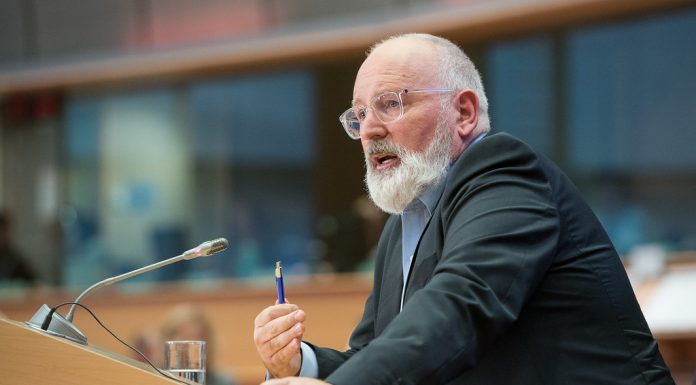The European Union is significantly falling behind its target of becoming smoke-free by 2040. According to the findings of the Special Eurobarometer 539, the EU’s average smoking rate is 24%, significantly higher than the 5% level which allows the “smoke-free” title. Disappointingly, the upcoming changes to the Tobacco Excise Directive look set to make this worse, not better.
The reality varies from country to country. The Eurobarometer data highlights the fact that many countries have smoking rates far above the European average. Among the 27 EU member states, there are six with smoking rates over 30%. This percentage is balanced by the rates of countries like Denmark, Ireland, Finland, Luxembourg and the Netherlands, who fall below 20%. And then, in a league of its own, is Sweden.
In 2023, Eurobarometer data underlined Sweden’s impressively low smoking rate of 8%. One year later, in 2024, the Swedish Public Health Agency revealed the rate had declined to 5.3%. The percentage is even lower between individuals who have experienced Swedish anti-smoking policies throughout their lives; only 4.5% of those still smoke. In sum, nowadays, Sweden can present itself as smoke-free, according to the 5% European target success rate for anti-smoking policies. The EU should, of course, take inspiration from its example.
Lowest lung cancer rates. Lowest oral cancer. Below 5% smoking rate. What does Sweden know that the rest of the world doesn't? Watch 'How Sweden Quit Smoking' to find out. #HealthInnovation pic.twitter.com/Xf2IdGg1K0
— We Are Innovation (@innovationweare) January 8, 2025
Sweden’s success is broadly explained by the accessibility, affordability, and acceptability of safer alternatives to cigarettes. They include e-cigarettes, heated tobacco products, and, in Sweden’s particular context, snus and nicotine pouches. Snus is a smokeless tobacco product to be placed under the upper lip, gradually releasing nicotine and flavour. For many Swedish people, it is culturally embedded. Snus traces its roots back to the 16th century when Swedes started experimenting with mixing tobacco leaves with salt and water.
Nicotine pouches came much later than snus, in the early 2000s, but are also a Swedish invention. The main difference between snus and pouches is that the latter are completely tobacco-free, allowing a wider variety of flavours, which makes them more acceptable and suitable for popularity outside of Sweden.
In 2023, an Ipsos opinion poll commissioned by the We Are Innovation network revealed 67% of Swedes who turned to alternative nicotine products were using snus. However, men tend to prefer it more than women. Despite 18% of the overall Swedish male population being snus users, 56% of the Swedish female ex-smokers chose to switch to nicotine pouches, against 29% who chose to switch to snus.
The effects of having snus and nicotine pouches as accessible, affordable and acceptable alternatives to cigarettes are clear to see in Sweden. Besides its extremely low smoking rates, the Scandinavian country has 31.3% fewer cancer deaths overall and 36% fewer lung cancer deaths compared to the European average, and has seen a decline of 12% on cardiovascular disease-related deaths since 2008.
However, these statistics do not seem to be reducing skepticism about snus and nicotine pouches within the European Union.
Snus has been banned in the EU since 1992. When it became a member state in 1995, Sweden managed to avoid this ban due to its long story of snus usage. Nevertheless, the citizens of all remaining 26 EU member states are expressly prohibited from selling and buying snus, both physically and online. Meanwhile, all these countries are yet to become smoke-free like Sweden. The ban was reinforced in 2014 with the Tobacco Products Directive, with little justification, only that oral tobacco products (like snus) had “adverse health effects,” which were not further explained.
Nicotine pouches, on the other hand, do not currently face any EU-wide ban, but several countries are targeting them with diverse restrictions. For instance, Belgium banned them outright in 2023, followed by France and the Netherlands in 2025. Denmark and the Czech Republic opted for harsh caps on the amount of nicotine they can campaign, while Finland severely restricted the availability of flavours and Luxembourg clamped down on advertising and introduced new taxes.
Besides ignoring Sweden’s public health wins, these restrictions dismiss scientific evidence. The health effects of snus appear to be minimal compared to those of cigarettes. Several studies and meta-studies point out snus does not seem to cause cancer and that the risk of heart disease is much lower for snus users than for cigarette users. Nicotine pouches offer even fewer health impacts than snus, as the absence of tobacco contributes to a lower toxicant profile . In fact, research shows nicotine pouches mirror pharmaceutical nicotine gum in their core formulation.
Snus and nicotine pouches are not health products, but evidence shows both work as a safer alternative for smokers, which is good for public health in the long run. Sweden’s success is no coincidence: legal snus, nicotine pouch innovation, and the lowest smoking rates in the EU. Time to replicate that success and lift restrictions everywhere.
Beatriz Santos is a Portuguese policy writer and a fellow with Young Voices Europe. She is also a coordinator with LOLA Portugal and Students for Liberty Portugal and CCO of We Are Innovation.
Disclaimer: www.BrusselsReport.eu will under no circumstance be held legally responsible or liable for the content of any article appearing on the website, as only the author of an article is legally responsible for that, also in accordance with the terms of use.













